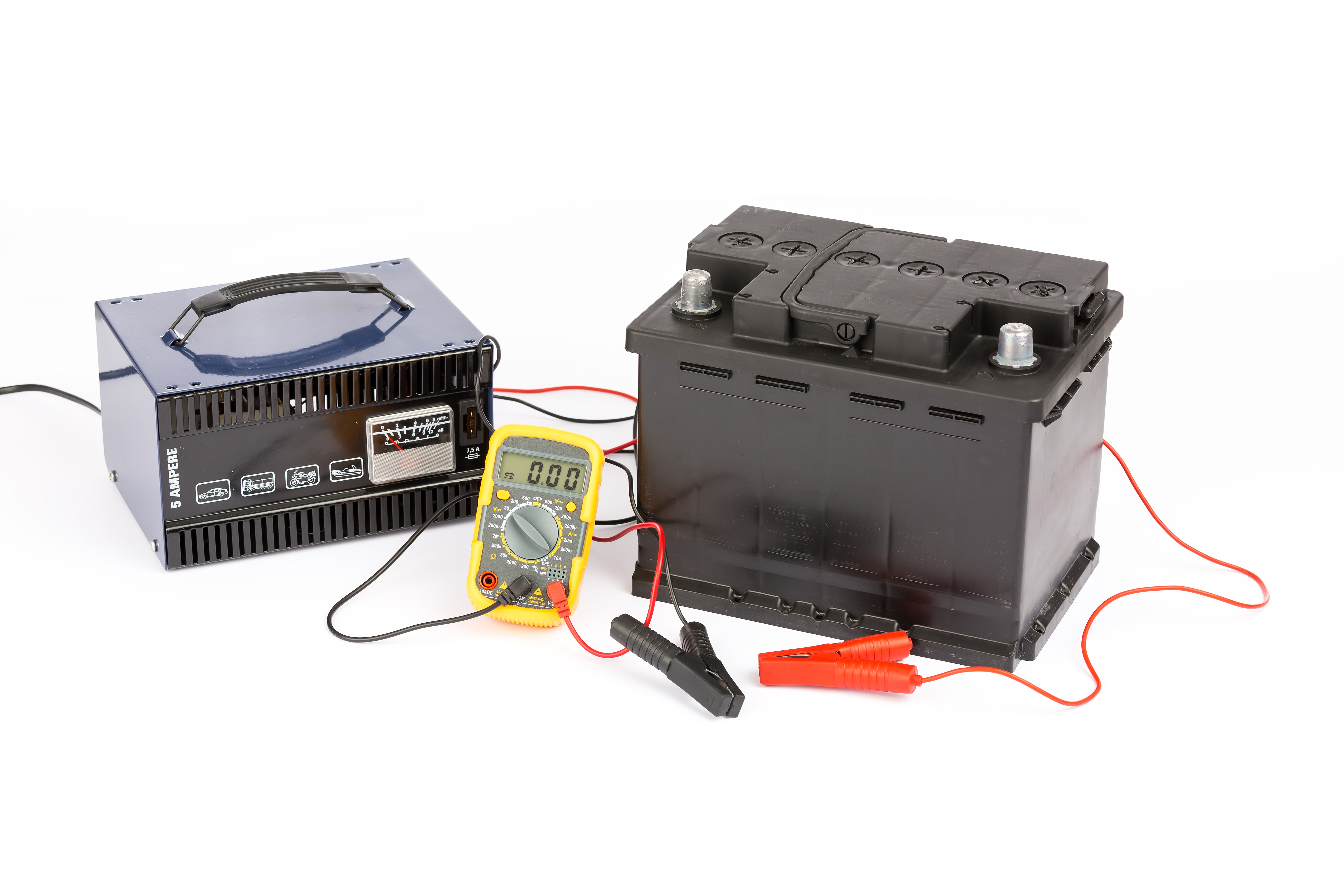
How to charge an AGM battery?
The first stage in a 3 or 4-stage CC/CV AGM battery charging algorithm is the “Bulk Stage.” The Bulk Stage is a “Constant Current” (CC) charge but may also be Constant Power, Pulse Current or Taper Charge.
In this BULK charging stage, the current should be limited to 20% to 30% of the battery C20 Ah rating. The Bulk Stage is a “Constant Current” (CC) charge but may also be Constant Power, Pulse Current or a controlled taper current Charge.
In this first BULK charging stage, the optimum charge current should be limited to 20% to 30% of the battery's C20 Ah rating. This stage should end when the cell voltage equals 2.45 volts per cell +/-.05 volts at 25°C/77°F.
This stage will represent approximately 60%-80% of the total charge time. The battery will be nearing 95% state of charge at the end of this stage.
The second stage is the “Absorption Stage.” This stage is a Constant Voltage (CV) stage where the terminal voltage is maintained at 2.40 V/Cell +/- .05 volts per cell at 25°C/77°F (remember to temperature compensate this voltage if possible).
The charge current is maintained until current acceptance drops by less than 1 ampere over 1 hour. This stage should take the battery thru 100% SOC and comfortably achieve its required overcharge of %104% to 112% of the previously discharged amount.
The total charge time thru stage 2 should not take longer than 10-12 hours. If this time is exceeded, charging should be stopped, and the battery, charger and/or charge process should be analyzed.
The maximum time in hours should = 1.2 times the Depth of Discharge (DOD) in Amp-hours (AH) divided by the average charge current in amps. If this time is exceeded, charging should be stopped, and the battery and/or charge process should be analyzed.
The process of charging a battery can reasonably be considered complete when:
- the batteries voltage does not continue to rise and remains stable over a measured period (voltage wins over time), or
- charging current drops by less than 1 amp over 1 hour (time wins over-voltage)
The third stage is the “Float Stage,” or the maintenance and monitor stage. This step is generally not needed if no load is present when the battery's device is not in operation and the battery's device is used regularly. It does not sit idle for lengthy periods. Float voltage should be maintained at 2.27V/Cell.
If a “Balance Mode” is included in the charging algorithm, it would follow the Absorption Stage and precede the float stage. This would become the third stage, and the “Float Stage” would become the fourth stage. A balanced mode is similar to an equalized function for flooded batteries but is performed at a lower voltage and/or is tightly controlled against current, voltage and time.
Compensation for temperature above or below 25°C/77°F can be made by:
- Subtracting 0.005 volts per cell for each 1°C (0.003 volts per 1°F) above 25°C or,
- adding 0.005 volts per cell for each 1°C (0.003 volts per 1°F) below 25°C
WARNING – DO NOT EQUALIZE CHARGE GELL OR AGM BATTERIES! Equalizing is an “over voltage-over charge” performed on flooded lead-acid batteries after they have been fully charged to help eliminate acid stratification. It helps to eliminate the acid stratification and sulfation that happens in all flooded lead acid batteries. Acid Stratification is the #1 killer of flooded lead acid batteries.
Laboratory-designed, specific to Discover, “Balance” charge algorithms have been designed. They are included in all Discover recommended Industrial Commercial charges offered for sale wherever our Discover AGM and GELL VRLA DRY CELL products are sold. Visually the Balance Charging curve diagram is similar to a flooded equalize charge curve in its finishing voltage. Still, it is strictly controlled to promote proper active material conversion and not to promote gassing or bubbling of the acid to help reduce acid stratification as in a flooded battery. Discover’s Balance charging algorithms are HIGHLY recommended for batteries being installed in strings, larger batteries using taller plate groups and/or with batteries constantly being subjected to high-rate deep discharges
